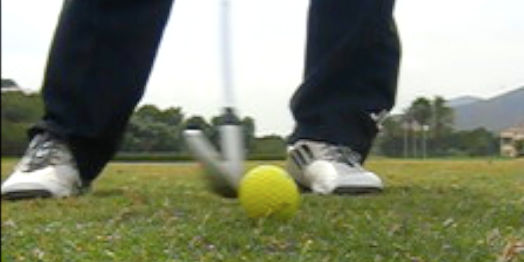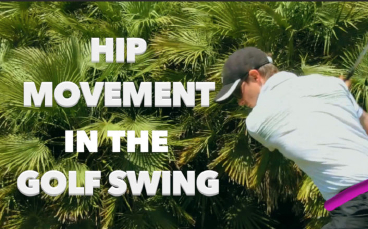Less Moving Parts
The prevailing wisdom is that “less moving parts” equals more consistency. I discussed that idea in this article (click to read).
As a result, I have come across many golfers who are trying to limit movement in certain areas of their swing. Sometimes this can be a good thing, but often times (as in the case below) it may cause a loss of power and consistency – and potentially injury.
Quick Video
Here is a great video from a fellow coach (Shaun Webb) using some fantastic technology (GEARS) to analyze the swing of a pro – specifically their hip movement.
Shaun explains how the hips of a professional go through a slight lowering towards the ground during transition, followed by a sharp raising up through the execution phase.
But Why?
This is a concept I explain in The Strike plan – see the clip below.
Basically, this motion
- is a result of increased ground forces – helping us produce speed and rotation
- helps us set up and then create a professional hand-path through impact
This allows us to hit the ball farther, increase strike consistency and can even help with path and face control.
The Opposite
Some amateurs I see, in an attempt to create less moving parts, may not have that slight hip drop in transition, but have the huge raise through the execution phase. This can then get the hips and lead shoulder very high through impact, resulting in a loss of lag (due to the forces applied to the club, and also out of sheer necessity in order to reach the ball).
 This motion can create a lot of thinned shots, toed shots or higher and weak-flighted shots.
This motion can create a lot of thinned shots, toed shots or higher and weak-flighted shots.
Sometimes, in an effort to compensate for the hips raising up, the player will stay down with their upper body longer. This high-hips, low upper-body combination can crunch the spine and cause a lot of stress during the rotation – potentially risking injury.
I also see the movement where a player raises the hips (and entire body) in the backswing and is forced to lower during the execution phase. This can cause a poor hand path, loss of power. Lot’s of people who have this movement report that they can’t seem to finish their swing/follow through.
Learn More
So if you suffer with
- early extension
- loss of lag
- lack of forward shaft lean at impact
- inconsistent divot depth and position
- struggle to follow through
This might be something to look at. If you want to find out more, why not check out The Strike Plan video series, where I explain how this fits into making you a better golfer. You also find out drills and techniques to help you improve the quality of your ground contact and sweet spot strike – vital components of any good player’s technique.
Strike It Like A Pro.
Get ready to take your game to the next level, with the most comprehensive guide to striking the golf ball better.

